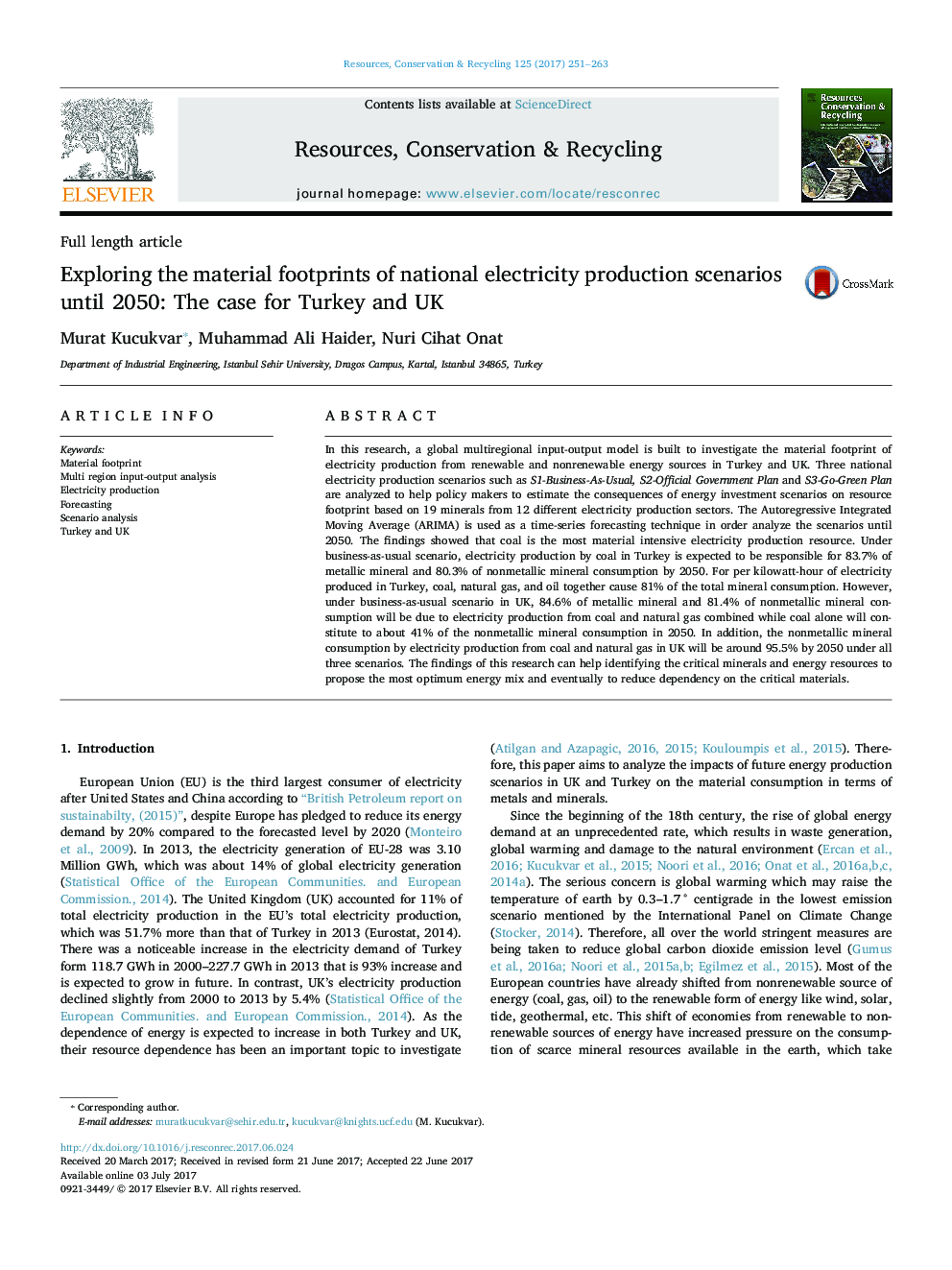| کد مقاله | کد نشریه | سال انتشار | مقاله انگلیسی | نسخه تمام متن |
|---|---|---|---|---|
| 5118664 | 1485667 | 2017 | 13 صفحه PDF | دانلود رایگان |
- Material footprints of electricity production from various energy sources are estimated.
- Business-as-usual, official plans, and renewable energy development plans are investigated.
- A MRIO analysis is conducted for a global trade-based material footprint accounting.
- Turkey's electricity by coal will use 83.7% metal and 80.3% nonmetal mineral by 2050.
- UK's electricity by coal and gas will use 84.6% metal and 81.4% nonmetal mineral by 2050.
In this research, a global multiregional input-output model is built to investigate the material footprint of electricity production from renewable and nonrenewable energy sources in Turkey and UK. Three national electricity production scenarios such as S1-Business-As-Usual, S2-Official Government Plan and S3-Go-Green Plan are analyzed to help policy makers to estimate the consequences of energy investment scenarios on resource footprint based on 19 minerals from 12 different electricity production sectors. The Autoregressive Integrated Moving Average (ARIMA) is used as a time-series forecasting technique in order analyze the scenarios until 2050. The findings showed that coal is the most material intensive electricity production resource. Under business-as-usual scenario, electricity production by coal in Turkey is expected to be responsible for 83.7% of metallic mineral and 80.3% of nonmetallic mineral consumption by 2050. For per kilowatt-hour of electricity produced in Turkey, coal, natural gas, and oil together cause 81% of the total mineral consumption. However, under business-as-usual scenario in UK, 84.6% of metallic mineral and 81.4% of nonmetallic mineral consumption will be due to electricity production from coal and natural gas combined while coal alone will constitute to about 41% of the nonmetallic mineral consumption in 2050. In addition, the nonmetallic mineral consumption by electricity production from coal and natural gas in UK will be around 95.5% by 2050 under all three scenarios. The findings of this research can help identifying the critical minerals and energy resources to propose the most optimum energy mix and eventually to reduce dependency on the critical materials.
Total (a) Metallic and (b) Nonmetallic mineral footprint of electricity production in Turkey and UK under Scenario 1, 2 and 3 forecasted until 2050.121
Journal: Resources, Conservation and Recycling - Volume 125, October 2017, Pages 251-263
